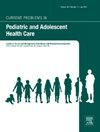Sustaining improvement gains
IF 3.7
4区 医学
Q1 PEDIATRICS
Current Problems in Pediatric and Adolescent Health Care
Pub Date : 2025-04-01
DOI:10.1016/j.cppeds.2025.101757
引用次数: 0
Abstract
A “system” as described by W. Edwards Deming, the father of the quality movement, is a set of interdependent components – structures, people, and processes – working together towards a common purpose.1 Within health systems, the primary intent and common purpose is to promote, restore, and maintain health by focusing on safety, effectiveness, and efficiency. For these reasons, many organizations devote substantial time and resources to build their improvement capability, but these hard-earned improvements fade as the focus changes to other priorities and workers revert to the old system of doing things. To counter this, many health systems are incorporating methods that ensure initiatives continue to help patients in the short term but also become embedded in the system to help future patients.
The Institute for Healthcare (IHI) in their 2016 White Paper suggests that the key to sustaining improvements in systems is to “focus on the daily work of frontline managers, supported by a high-performance management system (HPMS) that prescribes standard tasks and responsibilities for these managers at all levels of the organization.”2 Both these factors are interconnected. An HPMS can be categorized into several areas; quality management, quality control, quality improvement, and a culture of high performance. As a practical example, this paper describes how the IHI framework can be employed to achieve sustainability for quality improvements, using an example of improving problem list utilization at discharge for patients.
持续改进收益。
正如质量运动之父爱德华兹·戴明所描述的那样,“系统”是一组相互依赖的组成部分——结构、人员和过程——为共同的目标而共同努力在卫生系统内,主要意图和共同目标是通过注重安全、有效性和效率来促进、恢复和维持健康。由于这些原因,许多组织投入了大量的时间和资源来建立他们的改进能力,但是这些来之不易的改进随着焦点转移到其他优先事项和工人恢复到旧的做事系统而褪色。为解决这一问题,许多卫生系统正在采用各种方法,确保各项举措在短期内继续帮助患者,同时也纳入系统,以帮助未来的患者。医疗保健研究所(IHI)在其2016年白皮书中建议,持续改进系统的关键是“关注一线管理人员的日常工作,并以高性能管理系统(HPMS)为支持,该系统规定了组织各级管理人员的标准任务和责任。”这两个因素是相互联系的。HPMS可以分为几个领域;质量管理、质量控制、质量改进和高绩效文化。作为一个实际的例子,本文描述了如何利用IHI框架来实现质量改进的可持续性,并以提高患者出院时问题清单的利用率为例。
本文章由计算机程序翻译,如有差异,请以英文原文为准。
求助全文
约1分钟内获得全文
求助全文
来源期刊
CiteScore
4.60
自引率
0.00%
发文量
61
审稿时长
5 days
期刊介绍:
Recognized for its probing, comprehensive, and evidence-based reviews, Current Problems in Pediatric and Adolescent Health Care devotes each issue to a timely and practical topic in pediatric medicine, presented by leading authorities in the field. The journal offers readers easily accessible information that enhances professional experience and is pertinent to daily pediatric practice. Each issue''s review article is accompanied by an additional special feature designed to highlight a particular aspect of the topic presented.

 求助内容:
求助内容: 应助结果提醒方式:
应助结果提醒方式:


